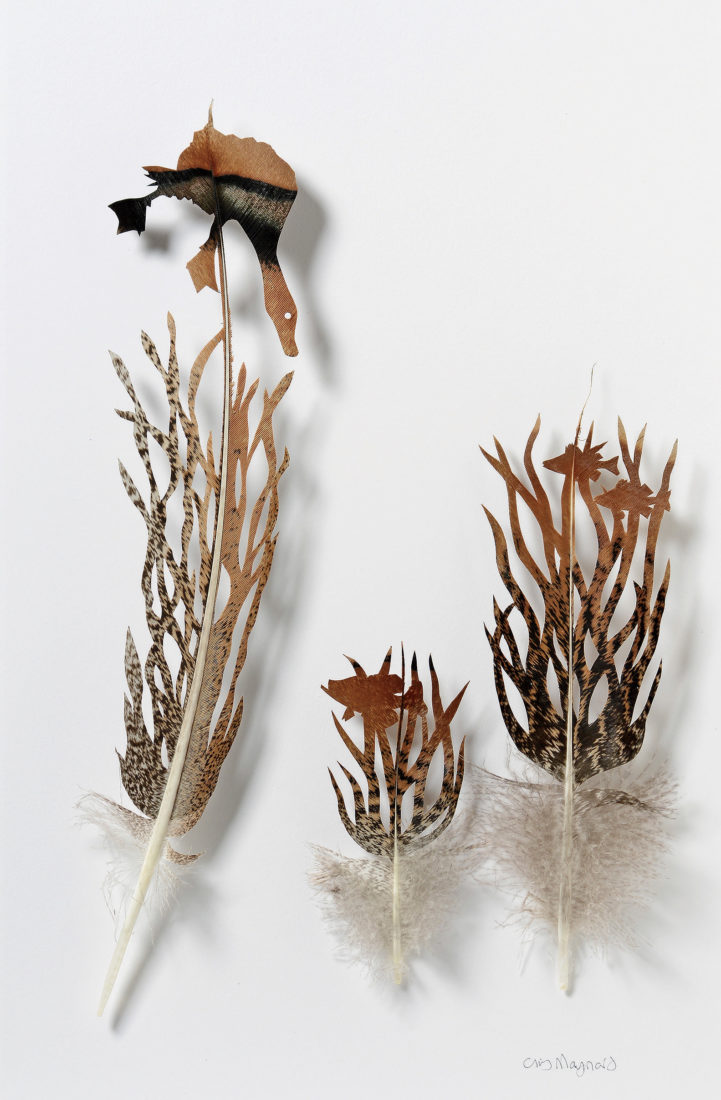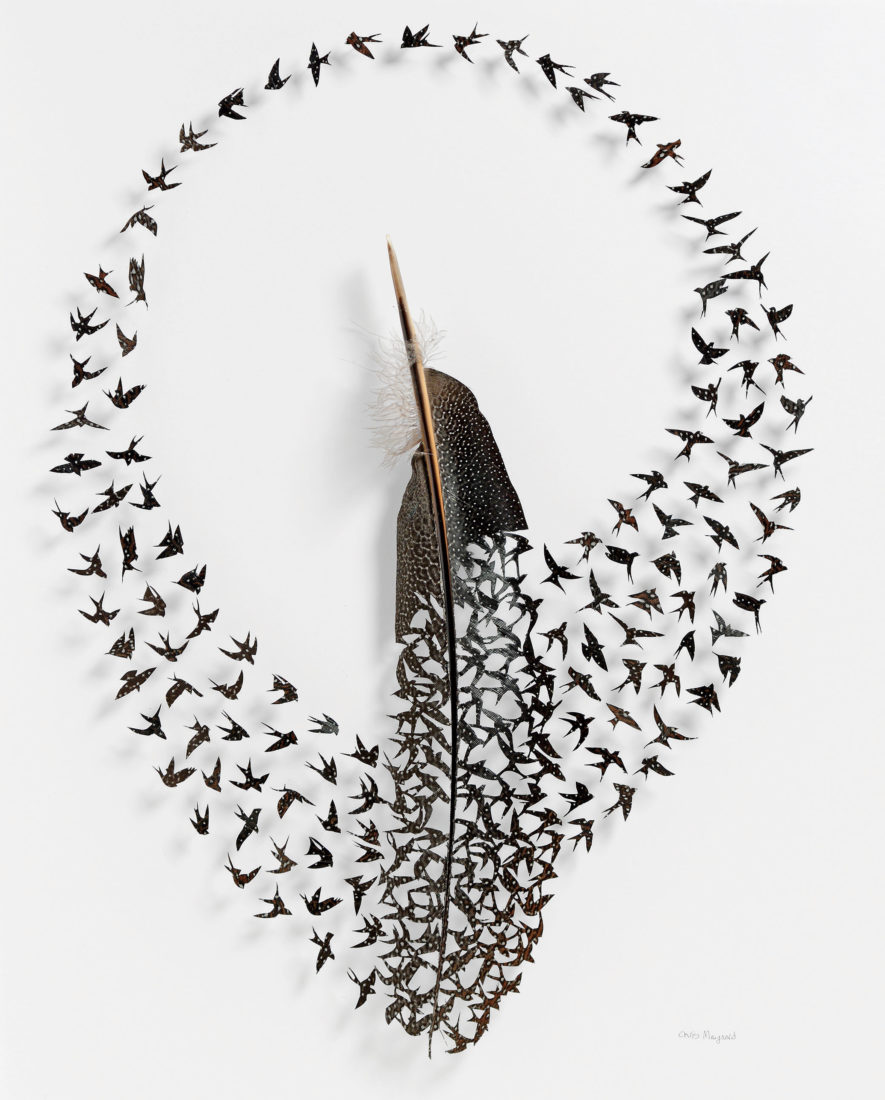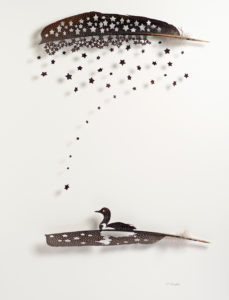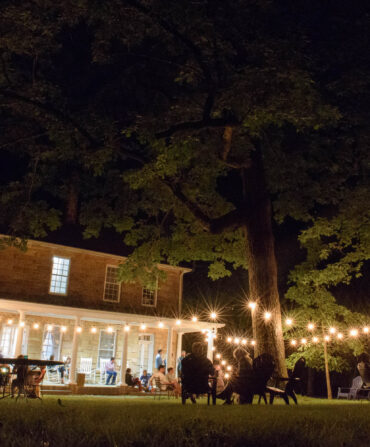There’s a fetching duality in the nature of a feather. Singly, a feather seems fragile and weightless. En masse, sheathing the body of a bird, feathers are capable of carrying a living creature to soaring heights and on epic migratory journeys.
These contradictions feed the artistic expression of Chris Maynard, who uses wee bits of deconstructed quills, barbs, and vanes to create exquisite shadow boxes, scenes that render the energy of avian flight. Wielding scalpels, tiny scissors, and forceps from the finely detailed world of ophthalmologic surgery, the Washington State-native transforms the delicate elements into grouse chicks following a hen. A kingfisher hovering over a fish-filled stream. Owls with wings spread, in that split second before a mouse is a meal. A flock of dunlins, carved from turkey plumes.
Maynard’s skillful, singular works have drawn attention and commissions from galleries and collectors across the globe, from a hotel in London to a show in Shanghai. He travels to the South, too, to display pieces specially crafted for the Southeastern Wildlife Exposition in Charleston, South Carolina, and the Plantation Wildlife Arts Festival in Thomasville, Georgia.
Not bad for a river hydrologist.
Maynard laughs at the seeming incongruities. “I have no formal education in art,” he admits. His mother was a professional artist who once taught art history, he says, “and I remember going through her old art history books, like any thirteen-year-old, looking for the naked pictures.” Educated as a biologist, Maynard, who is sixty-two, spent his career working on Columbia River water flows and their effects on endangered salmon of the Pacific Northwest.
But his mother’s influence went beyond racy textbooks. One of her primary interests was Japanese sumi-e painting, in which each brushstroke carries great texture and detail. “She would paint a bird with just a few strokes of the brush,” Maynard recalls. “Very simple and elegant. That made a big impact.” After his mother died, in 2008, Maynard realized how much art had been a part of his life, as had a childhood-born love of feathers—he even made a feather lamp for his sister as a teen. He started using the intriguing (if unusual) medium professionally in 2010 and went full-time three years later.
Employing materials from private aviaries and zoos—it is legal to use wild feathers such as grouse and quail in only a very few instances, he says—Maynard first care-
fully adheres a special backing to the underside of the specimen. He then draws the design, replicates it on a computer, prints out the template, and transfers it to the feather, fine-tuning by pen. From there, it’s a matter of a very steady hand, cutting and removing tiny slices to produce these stirring tributes to birdlife.

Photo: Chris Maynard
Dabblers View (21″x14″), cut from turkey plumes.
As to why his pieces seem to affect people so deeply, Maynard has a few ideas. His art “puts birds right in front of people,” he says, “up close, in ways that help them see birds in a different way.” Bird behavior—even certain songs and calls—also influences the design. “It’s subtle, but fostering that appreciation for the natural world is a big part of my art,” he says. “As an artist, I can’t really capture life. So I have to try to capture its essence.”
That essence moves fans in different ways. Folks in large cities, Maynard says, tend to respond to shadow boxes featuring “more nondescript birds, like swallows. They recognize them as birds, but mostly they are drawn to ideas like flight.” In rural areas, and throughout the South, however, something else is going on. “Hunters and birders are often more interested in work that shows a flock of turkeys or a covey of quail,” he reports. “These folks are out there day after day. They understand how birds interact with each other.”
G&G VIDEO: Step inside Chris Maynard’s studio (below).









